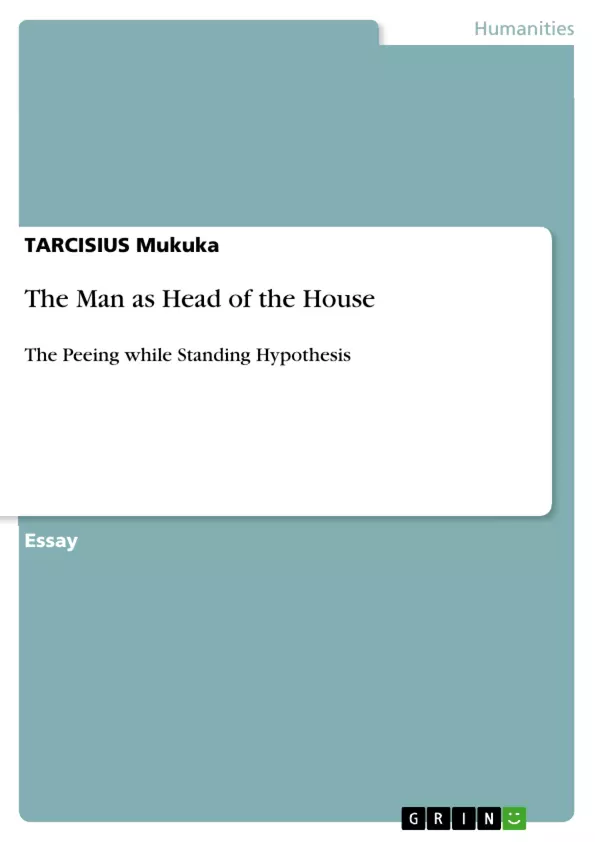This exegetical article examines the source of the misconception that the man is the head of the house. It punctures and debunks the patriarchal myth that men have it by divine mandate to lord it over women. I do this by providing a detailed exegetical analysis of Eph 5. 21‒24 which for a start does not even say that the man is the head of the house.
I argue that the man is described as kephalē of the woman, whether understood as head or source of the wife, not to tell us who is boss but to use the human experience of spousal love as an analogy for the love between Jesus Christ (the husband) and the Church (the wife). Once the analogy is understood, it is no longer about husband and wife but about the Church’s relationship with her spouse Jesus Christ.
Table of Contents
- Introduction
- The Power of Analogies: Beware of the Short Skirt Covering the Essentials
- Peeing While Standing Hypothesis
- Puncturing and Debunking the Man as Head of the House
- Conclusion
Objectives and Key Themes
This article aims to debunk the misconception that the man is the head of the house, often cited as a justification for male dominance. It challenges this view by providing an exegetical analysis of Ephesians 5:22-32.
- The misuse of Scripture to justify patriarchal structures
- The importance of understanding the analogy in Ephesians 5:22-32
- The true nature of the relationship between Christ and the Church
- The role of the Church in promoting equality and challenging patriarchal norms
- The impact of cultural practices such as lobola on gender relations
Chapter Summaries
- Introduction: The article introduces the misconception that the man is the head of the house, drawing on a personal anecdote to illustrate the pervasiveness of this idea. It also outlines the author's hypothesis, which critiques this notion through a humorous lens.
- The Power of Analogies: Beware of the Short Skirt Covering the Essentials: This section highlights the misuse of the analogy in Ephesians 5:22-32, arguing that the focus should be on its meaning rather than its literal interpretation.
- Peeing While Standing Hypothesis: This chapter examines the underlying reasons for the misconception, highlighting the ways in which men often claim superiority based on their physical abilities. It also addresses the role of cultural practices like lobola in perpetuating gender inequality.
- Puncturing and Debunking the Man as Head of the House: This chapter delves into the exegesis of Ephesians 5:22-32, analyzing the Greek text and exploring the significance of the analogy used by St. Paul. It argues that the analogy is meant to be applied to the relationship between Christ and the Church, not to the power dynamics between husband and wife.
Keywords
The main keywords and focus topics of this article include: patriarchy, gender inequality, Ephesians 5:22-32, biblical interpretation, analogy, Christ, Church, lobola, domestic Church, equality, submission, marriage, sacrament, mistranslation, misinterpretation.
- Arbeit zitieren
- Dr TARCISIUS Mukuka (Autor:in), 2021, The Man as Head of the House, München, GRIN Verlag, https://www.grin.com/document/983317



